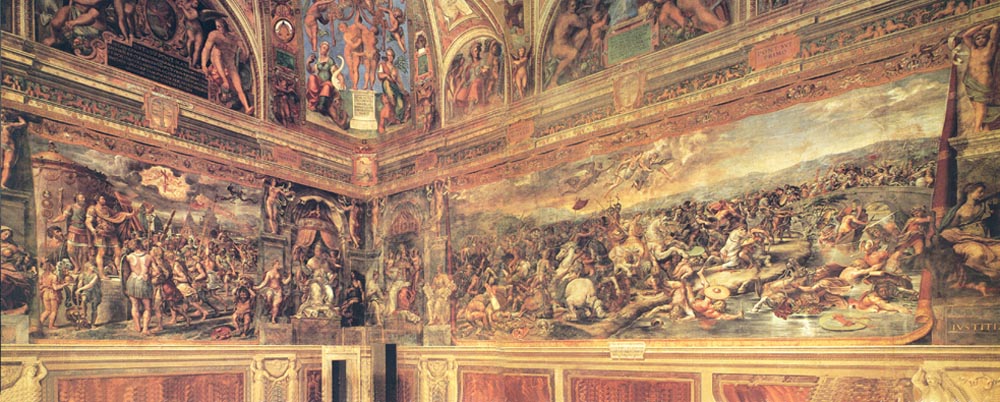The Artist of the “Battle at the Mulvian Bridge”
Sidebar to: Tracing the Spread of Early Christianity Through Coins

Giulio Romano (c. 1499–1546) was chief assistant to the great Italian master Raphael (1483–1520). Raphael had been called to Rome by Pope Julius II in 1508 to help redecorate the papal apartments in the Vatican. This was a time of furious artistic activity in Rome; Pope Julius had razed the basilica of old St. Peter’s and was rebuilding it; he planned a vast extension to the Vatican palace and a monumental secular law court. Pope Julius commissioned new an to decorate the extensions on a scale emulating the ancient Roman emperors.
Michelangelo was already at work on the Sistine Chapel ceiling when the 26-year-old Raphael arrived—probably at the request of Donato Bramante, the great architect of the new St. Peter’s.
Julius II was so pleased with Raphael’s first results that he decided to obliterate all work of other artists in the papal suite—except for a ceiling frescoed by Perugino, Raphael’s teacher. Julius II and his successor, Leo X, eventually gave the task of redecorating four rooms to the exuberant young Raphael.
Begun around 1519, the Hall of Constantine was the last room in this series to be frescoed. Raphael must have created the basic decorative scheme and supplied detailed studies and preparatory drawings for at least part of the scene depicting the victory of Constantine at the Mulvian Bridge. But, in the full flower of his talent and power, Raphael suddenly died at age 37.
Already a library member? Log in here.
Institution user? Log in with your IP address.

